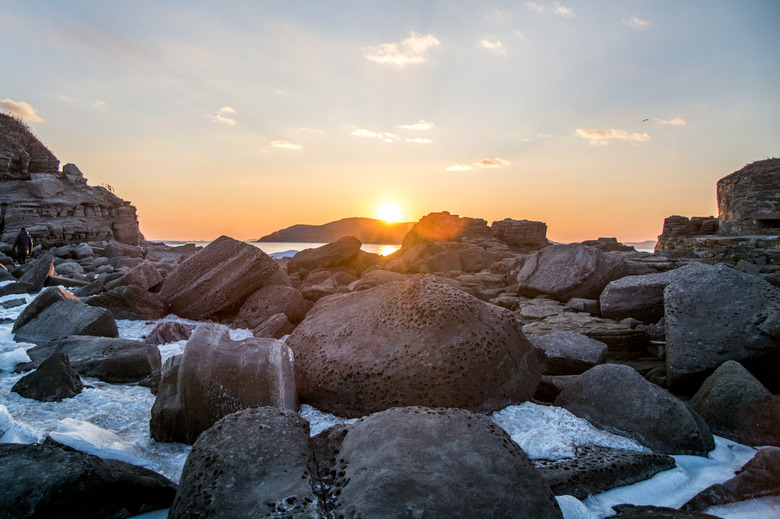What Are The Agents Of Weathering?
When rocks, land formations and minerals begin to break down and dissolve, it's called weathering. After crumbling, the process of erosion transports these broken bits away by wind or rain. Agents responsible for weathering include ice, salts, water, wind and plants and animals. Road salt and acids represent a form of chemical weathering, as these substances contribute to the wearing away of rocks and minerals as well.
TL;DR (Too Long; Didn't Read)
The Appalachian Mountains offer an excellent example of weathering. Wind, rain, and erosion brought this towering mountain range down from 30,000 feet to just over 6,600 feet high. These mountains were once taller than Mount Everest, the Earth's tallest mountain in the Himalayas.
Physical Weathering
Physical Weathering
Erosion is a form of mechanical or physical weathering that occurs when the movement of a force like rain water or flood waters wear down the surface of rocks and carry the worn away parts to other areas. Erosion also occurs with forces like wind, glacier movement, or the action of high tides or waves along coastlines.
Freeze and Thaw
Freeze and Thaw
Freeze and thawing presents another form of mechanical weathering. You can observe this in cold regions that experience below freezing temperature drops during the night, and then warm ups during the day. When water freezes on a road after a rain, becoming black ice, it expands the affected surface. As the road thaws and repeatedly freezers during winter, the expanding process creates instability, resulting in potholes.
Chemical Weathering
Chemical Weathering
Chemical weathering, such as oxidation or hydrolysis, occurs when heat and moisture react with chemicals in the rock to change its properties. Oxidation occurs when oxygen creates a chemical reaction, like rust on iron, which makes the rock softer with time. Hydrolysis occurs when water reacts with compounds in the rock to create other compounds. You can identify chemical weathering because the rock becomes a different color, such as orange, red or yellow.
Biological Weathering
Biological Weathering
Biological weathering includes the effects of plant and animals on rocks and minerals. For example, an animal inadvertently kicks a rock down a hill where it breaks upon landing. Or when a bit of moss or lichen attach itself to its new host, a shaded rock and begins to eat away at the rock material, slowly breaking it down into smaller pieces. Plants or trees that take root in a crack of a rock can cause the rock to break apart as the plant grows and expands.
Cite This Article
MLA
Sherwood, Chris. "What Are The Agents Of Weathering?" sciencing.com, https://www.sciencing.com/agents-weathering-8136395/. 20 April 2018.
APA
Sherwood, Chris. (2018, April 20). What Are The Agents Of Weathering?. sciencing.com. Retrieved from https://www.sciencing.com/agents-weathering-8136395/
Chicago
Sherwood, Chris. What Are The Agents Of Weathering? last modified March 24, 2022. https://www.sciencing.com/agents-weathering-8136395/
